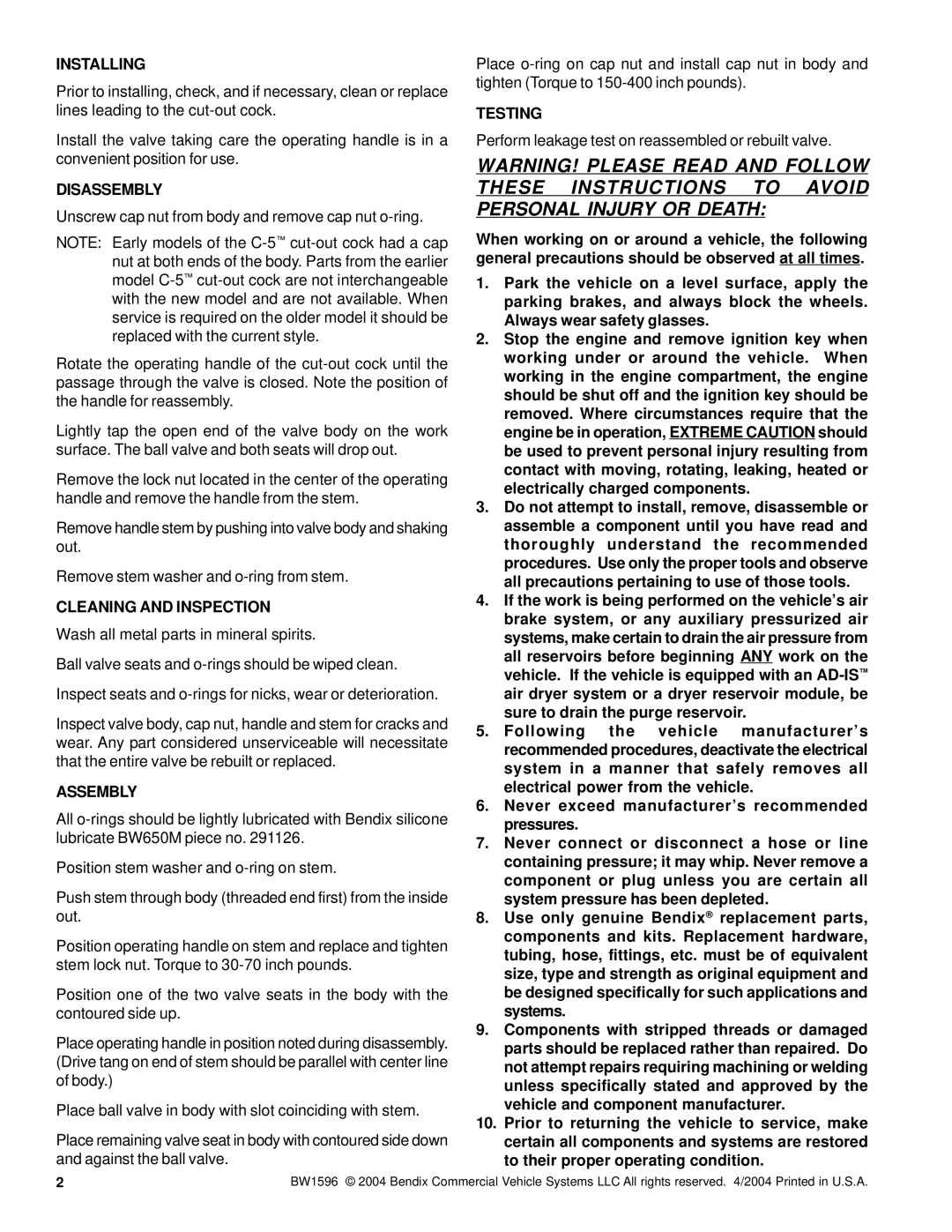INSTALLING
Prior to installing, check, and if necessary, clean or replace lines leading to the
Install the valve taking care the operating handle is in a convenient position for use.
DISASSEMBLY
Unscrew cap nut from body and remove cap nut
NOTE: Early models of the
Rotate the operating handle of the
Lightly tap the open end of the valve body on the work surface. The ball valve and both seats will drop out.
Remove the lock nut located in the center of the operating handle and remove the handle from the stem.
Remove handle stem by pushing into valve body and shaking out.
Remove stem washer and
CLEANING AND INSPECTION
Wash all metal parts in mineral spirits.
Ball valve seats and
Inspect seats and
Inspect valve body, cap nut, handle and stem for cracks and wear. Any part considered unserviceable will necessitate that the entire valve be rebuilt or replaced.
ASSEMBLY
All
Position stem washer and
Push stem through body (threaded end first) from the inside out.
Position operating handle on stem and replace and tighten stem lock nut. Torque to
Position one of the two valve seats in the body with the contoured side up.
Place operating handle in position noted during disassembly. (Drive tang on end of stem should be parallel with center line of body.)
Place ball valve in body with slot coinciding with stem.
Place remaining valve seat in body with contoured side down and against the ball valve.
Place
TESTING
Perform leakage test on reassembled or rebuilt valve.
WARNING! PLEASE READ AND FOLLOW THESE INSTRUCTIONS TO AVOID PERSONAL INJURY OR DEATH:
When working on or around a vehicle, the following general precautions should be observed at all times.
1.Park the vehicle on a level surface, apply the parking brakes, and always block the wheels. Always wear safety glasses.
2.Stop the engine and remove ignition key when working under or around the vehicle. When working in the engine compartment, the engine should be shut off and the ignition key should be removed. Where circumstances require that the engine be in operation, EXTREME CAUTION should be used to prevent personal injury resulting from contact with moving, rotating, leaking, heated or electrically charged components.
3.Do not attempt to install, remove, disassemble or assemble a component until you have read and thoroughly understand the recommended procedures. Use only the proper tools and observe all precautions pertaining to use of those tools.
4.If the work is being performed on the vehicle’s air brake system, or any auxiliary pressurized air systems, make certain to drain the air pressure from all reservoirs before beginning ANY work on the vehicle. If the vehicle is equipped with an
5.Following the vehicle manufacturer’s recommended procedures, deactivate the electrical system in a manner that safely removes all electrical power from the vehicle.
6.Never exceed manufacturer’s recommended pressures.
7.Never connect or disconnect a hose or line containing pressure; it may whip. Never remove a component or plug unless you are certain all system pressure has been depleted.
8.Use only genuine Bendix® replacement parts, components and kits. Replacement hardware, tubing, hose, fittings, etc. must be of equivalent size, type and strength as original equipment and be designed specifically for such applications and systems.
9.Components with stripped threads or damaged parts should be replaced rather than repaired. Do not attempt repairs requiring machining or welding unless specifically stated and approved by the vehicle and component manufacturer.
10.Prior to returning the vehicle to service, make certain all components and systems are restored to their proper operating condition.
2 | BW1596 © 2004 Bendix Commercial Vehicle Systems LLC All rights reserved. 4/2004 Printed in U.S.A. |
